When growing tomato plants in the greenhouse and in the open field, work is planned on the formation of bushes. This measure is necessary to improve the growth of tomatoes and fruit ripening on them. As a rule, you need to cut off the extra sheets and shoots of tomato, which are called stepchildren. They only increase the amount of green mass on the bushes, consume the nutrients needed for ripening tomatoes.
If we neglect this event, the fruits of tomatoes will grow small, the plants will hurt, the quality of the harvest will be low.
Table of contents
The need to remove the leaves of a tomato
It is no secret that the foliage of any plant performs the important functions of photosynthesis. And if you tear off all the leaves from the bush, it will just die.
In the process of growth, the very first leaves that are below begin to age, come into contact with the soil surface, turn yellow and become covered with spots. It is they provoke stagnation of air in the greenhouse and the development of diseases. If you think about it, then they performed their function, the plant no longer needs them.
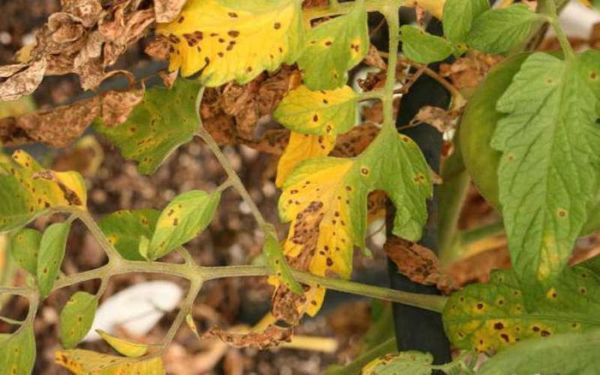
What leaves on tomatoes need to cut?
It is not recommended, coming to the garden, to cut off everything that the eye sees. Bushes are alive, they are under stress from any actions. So for one procedure do not remove large numbers of leaves.
First of all, you need to break off the greens that lying on the ground. After a few days, you can examine the plants more closely, and if the tomatoes on the hand have grown to normal size, you can safely remove the foliage below.
As a rule, experienced gardeners perform a similar procedure twice a week, which allows the plant to form fruits in the hands, located above.
In addition, you should pay attention to:
- foliage oriented to the north. So you improve the ventilation of tomato beds, which is very important for thick plantings;
- fat branches, not forming fruit. Removing them, you give the bush an opportunity to increase productivity.
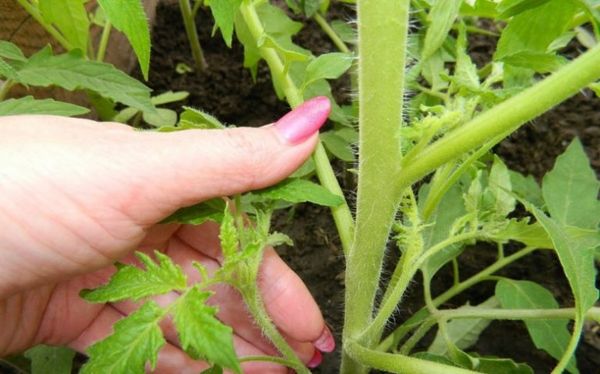
The correct time for pruning leaves
Some gardeners start removing lower foliage right away, as soon as the fruit brush begins to bloom. A separate category assures that this should be done after how tomatoes will be formed.
If based on theory,then during the flowering and formation of the ovary, tomato brushes receive the necessary nutritional components, which are formed as a result of photosynthesis, directly from the leaves. A little later, as soon as the tomatoes begin to synthesize them independently, the leaves can be cut.
Specific dates to determine in this is impossible. Much depends on the type of crop, climate features in a particular area, greenhouse microclimate. For the benchmark it is necessary to take the period of flowering and the appearance of fruits. As soon as the vegetables begin to grow in size and grow brown, the lower leaves should be removed gradually.
Have a normally developed bush thirty centimeter part of the stem under the bottom fruit brush must be empty. Only in this case, he will receive the required amount of light, the nutrients from the root system will begin to flow directly to the ripening tomatoes.
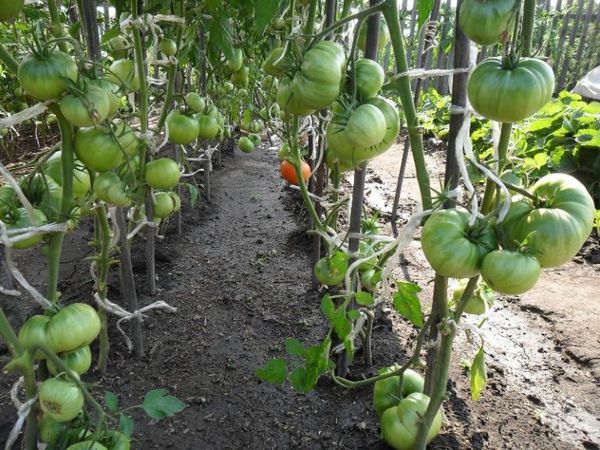
Feel free to add to this the increase in the humidity level of the air, the improvement of ventilation, the reduction of the risk of disease.
How to prune tomatoes
There are no strict rules for pruning.It is believed that any plant tolerates removal without any problems. up to three leaves twice a week. Sometimes a shrub needs a more global procedure if it develops a dangerous disease.
How and what to break off shoots
Gardeners remove foliage in various ways. But it is best to choose the one that is more convenient and less harmful to tomato crops.
Break off the leaves, slightly turning them to the side in the direction of the hour hand is possible, but this scheme is not perfect.
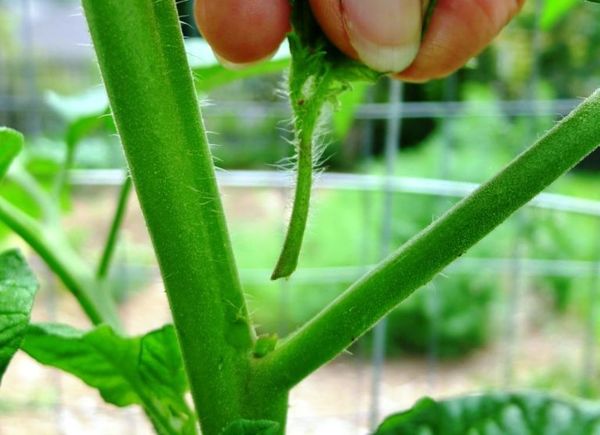
Trimming instruction
To do everything right and not to injure the plant, we advise you to do the following:
- procedure to perform in warm weather;
- prepare in advance sharp scissors and a small tank with hydrogen peroxide;
- the tool pruns extra foliage - it will be more convenient and faster;
- wound processed by peroxideto protect the plant from diseases.
Acting in this way, you inflict minimal damage to the crop, which after treatment will dry out very quickly.Instead of hydrogen peroxide is allowed to use manganese solution or activated carbon.
How many brushes to leave on tomatoes in the greenhouse
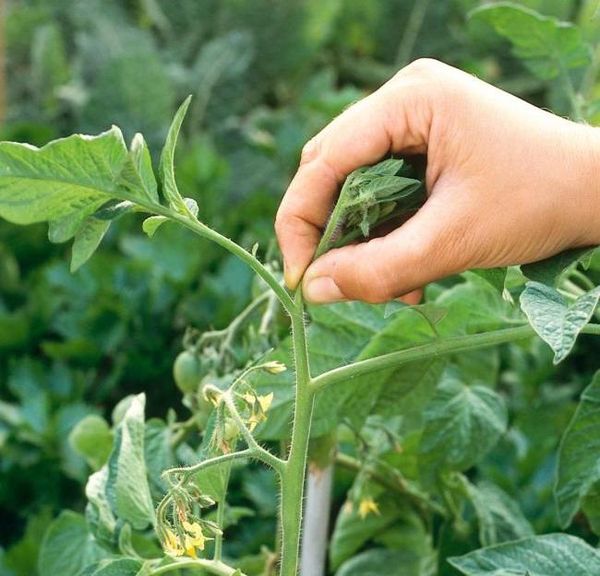
In late July - early August, most gardeners begin to pinching tops plants. Already it becomes obvious that the rest of the brushes to form tomatoes do not have time. On the plant remains seven to eight of the most developed tasselswhich will yield.
After a similar procedure, when you build up any kind of green without you, you can prune all foliageleaving three - four on top. First, you do not disturb the movement of the juice in the plant. Secondly, perform excellent prevention of probable diseases.
As you can see, the measure is really necessary, it perfectly helps the plant in growth and fruiting. Observing all the recommended advice, you can protect the beds from disease and get a decent crop of tomatoes.
The main thing is to carefully examine the bushes, to choose the foliage to be removed, to take care not to injure the culture.
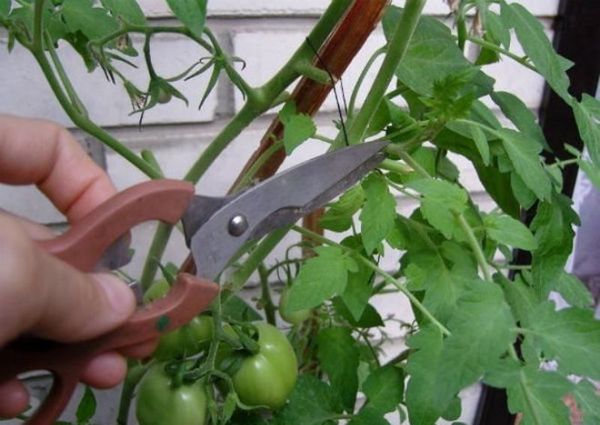
thanks, everything became clear
What are the leaves curled from tomatoes? Is it because of the lack of top dressing?